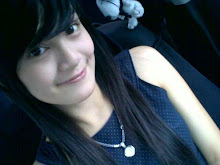 Gabor Szabo was one of the most original guitarists to emerge in the 1960s, mixing his Hungarian folk music heritage with a deep love of jazz and crafting a distinctive, largely self-taught sound. Inspired by a Roy Rogers cowboy movie, Szabo began playing guitar when he was 14 and often played in dinner clubs and covert jam sessions while still living in Budapest. He escaped from his country at age 20 on the eve of the Communist uprising and eventually made his way to America, settling with his family in California. He attended Berklee College (1958-1960) and in 1961 joined Chico Hamilton's innovative quintet featuring Charles Lloyd. Urged by Hamilton, Szabo crafted a most distinctive sound; as agile on intricate, nearly-free runs as he was able to sound inspired during melodic passages. Szabo left the Hamilton group in 1965 to leave his mark on the pop-jazz of the Gary McFarland quintet and the energy music of Charles Lloyd's fiery and underrated quartet featuring Ron Carter and Tony Williams. Szabo initiated a solo career in 1966, recording the exceptional album, Spellbinder, which yielded many inspired moments and "Gypsy Queen," the song Santana turned into a huge hit in 1970. Szabo formed an innovative quintet (1967-1969) featuring the brilliant, classically trained guitarist Jimmy Stewart and recorded many notable albums during the late '60s. The emergence of rock music (especially George Harrison, Eric Clapton, and Jimi Hendrix) found Szabo successfully experimenting with feedback and less successfully (but innovative at the time) with more commercially oriented forms of jazz. During the '70s, Szabo regularly performed along the West Coast, hypnotizing audiences with his enchanting, spellbinding style. But from 1970, he was locked into a commercial groove, even though records like Mizrab occasionally revealed the success of his jazz, pop, Gypsy, Indian, and Asian fusions. Szabo had revisited his homeland several times during the '70s, finding opportunities to perform brilliantly with native talents. He was hospitalized during his final visit and died in 1982, just short of his 46th birthday and five years after his final American album was released. AMG.
Gabor Szabo was one of the most original guitarists to emerge in the 1960s, mixing his Hungarian folk music heritage with a deep love of jazz and crafting a distinctive, largely self-taught sound. Inspired by a Roy Rogers cowboy movie, Szabo began playing guitar when he was 14 and often played in dinner clubs and covert jam sessions while still living in Budapest. He escaped from his country at age 20 on the eve of the Communist uprising and eventually made his way to America, settling with his family in California. He attended Berklee College (1958-1960) and in 1961 joined Chico Hamilton's innovative quintet featuring Charles Lloyd. Urged by Hamilton, Szabo crafted a most distinctive sound; as agile on intricate, nearly-free runs as he was able to sound inspired during melodic passages. Szabo left the Hamilton group in 1965 to leave his mark on the pop-jazz of the Gary McFarland quintet and the energy music of Charles Lloyd's fiery and underrated quartet featuring Ron Carter and Tony Williams. Szabo initiated a solo career in 1966, recording the exceptional album, Spellbinder, which yielded many inspired moments and "Gypsy Queen," the song Santana turned into a huge hit in 1970. Szabo formed an innovative quintet (1967-1969) featuring the brilliant, classically trained guitarist Jimmy Stewart and recorded many notable albums during the late '60s. The emergence of rock music (especially George Harrison, Eric Clapton, and Jimi Hendrix) found Szabo successfully experimenting with feedback and less successfully (but innovative at the time) with more commercially oriented forms of jazz. During the '70s, Szabo regularly performed along the West Coast, hypnotizing audiences with his enchanting, spellbinding style. But from 1970, he was locked into a commercial groove, even though records like Mizrab occasionally revealed the success of his jazz, pop, Gypsy, Indian, and Asian fusions. Szabo had revisited his homeland several times during the '70s, finding opportunities to perform brilliantly with native talents. He was hospitalized during his final visit and died in 1982, just short of his 46th birthday and five years after his final American album was released. AMG.
listen here
Friday, July 15, 2011
Gabor Szabo - Live With Charles Lloyd 1974
Popular Posts
-
When you think of the Doors , "guitar" isn't the first thing that usually comes to mind ( Jim Morrison 's manic persona an...
-
The only album by the Steve Baron Quartet was a fitfully interesting but uneven effort, jumping between Baroque folk-rock, moody early si...
-
Kathy McCord - Kathy McCord 1970 Kathy McCord released a lone self-titled LP in 1970, the first release from Creed Taylor ’s CTI Records, ...
-
David Lannan was a street singer from San Francisco, CA. 1970's Street Singer was recorded live outside The F.B.I. Stock Exchange City H...
-
Although it was a disappointing seller and signaled the start of Donovan 's commercial decline, Open Road could have been a new beginn...
-
Ahmed Abdul-Malik was one of the first musicians to integrate non-Western musical elements into jazz. In addition to being a hard bop bas...
-
A wild, freewheeling, and ultimately successful attempt to merge psychedelia with jazz-rock, Soft Machine 's debut ranges between loving...
-
The Small Faces were the best English band never to hit it big in America. On this side of the Atlantic, all anybody remembers them for i...
-
Redbone was a Los Angeles-based group led by Native American Pat and Lolly Vegas . They hit paydirt in 1974 with the million-seller "...
-
Kingfish is a San Francisco-influenced band which originally featured the Grateful Dead's Bob Weir , singer/harpist Matthew Kelly , bas...











0 comments:
Post a Comment